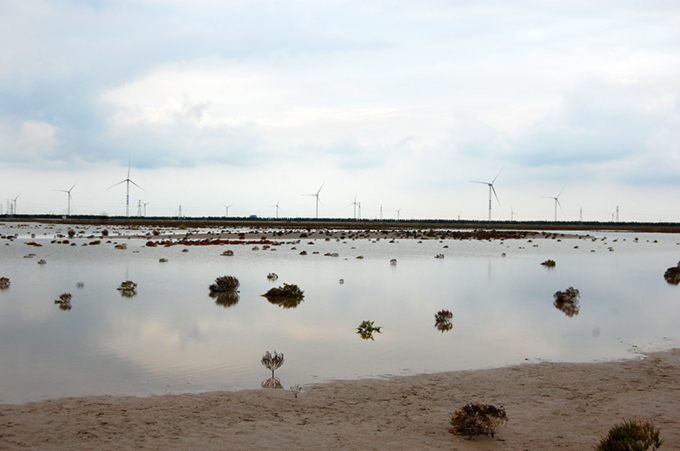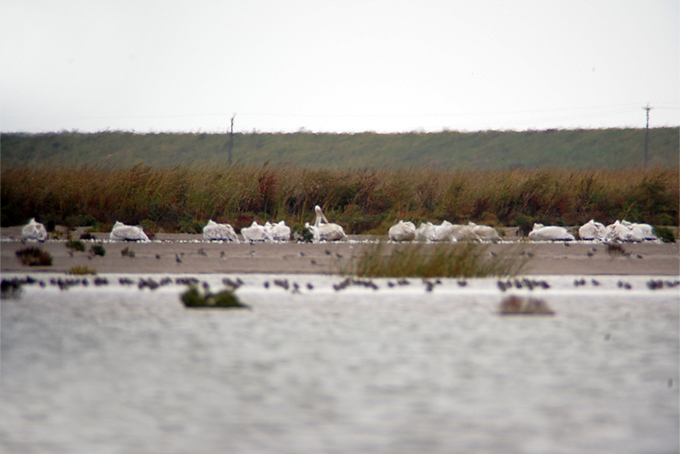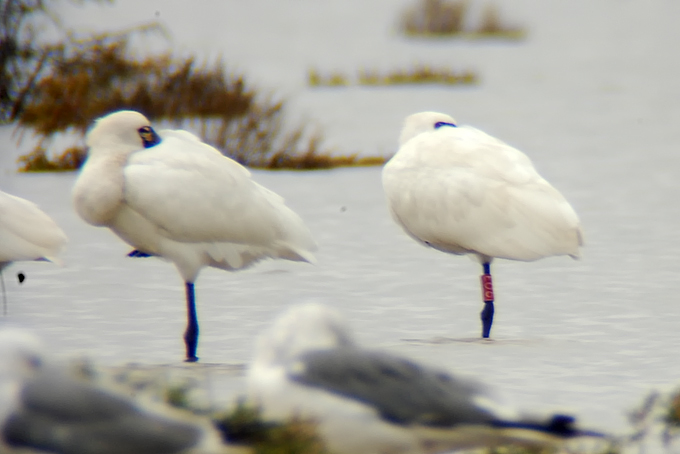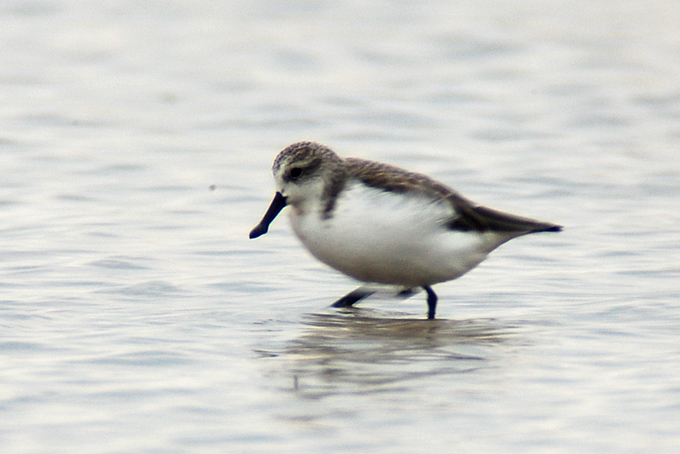A very quick update from Rudong - one of the most important remaining tidal-flat areas for shorebirds anywhere in Asia (or the world!). This is a still vast area - with massively wide sandy-mud mix tidal-flats which historically were probably tens of km wide. Organised by SBS in China (SBS Task Force members in China) with the SBS Task Force, a multinational team of counters arrived in Rudong on the 14th to conduct five days of survey along much of this coast, before holding a two day high-level workshop (thanks to government officials) on SBS and shorebird conservation.
The need for data collation and due process do not permit at this time a detailed review of counts and species recorded so far (count data will instead be released in a full post-survey report by the Task Force). Nonetheless, along with tens of thousands of other shorebirds (predominantly Kentish Plover and Dunlin) substantial / as expected numbers of Spoon-billed Sandpiper have already been found (with one or two also well-filmed); globally record-breaking numbers of Nordmann's Greenshank have been found; and other threatened waterbirds so far observed using this extremely important (and threatened) area include a flock of Dalmatian Pelican, in addition to a single Relict Gull and at least seven Black-faced Spoonbill.
In this vast landscape of tidal-flats, spartina marshes, reclamation areas and wind-farms, wooded areas also have much potential for attracting large numbers of migrants. After Beaufort Force 6-7 northerlies on 15th, moderate north-northwest winds on 16th produced a subtantial fall - with e.g. an estimated 400 Rufous-tailed Robin and 40 Siberian Rubythroat found in one area of small coppices and parkland. A long list of interesting landbird species were recorded in the same area and along sea-walls in all areas that were surveyed. In addition to locally "common species" including Spotted Dove, Long-tailed Shrike, Light-vented Bulbul and Red-billed Starling, local scarcities recorded on 16th included Von Schrenck's Bittern (1), Amur Falcon (3), Japanese Bush Warbler (1) and Hume's Leaf Warbler (2). Personal landbird highlight for the day, however, were three stunning Reed Parrotbill - a regional endemic and another reason why many people understand that natural wetlands in Rudong are extremely important not only to people and biodiversity in China but also to the world.
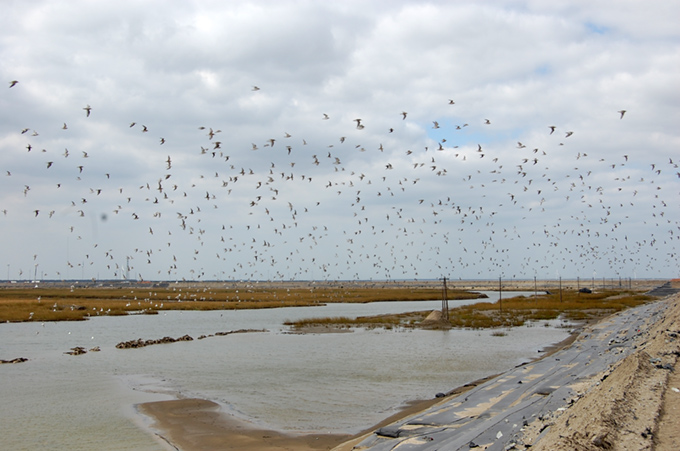
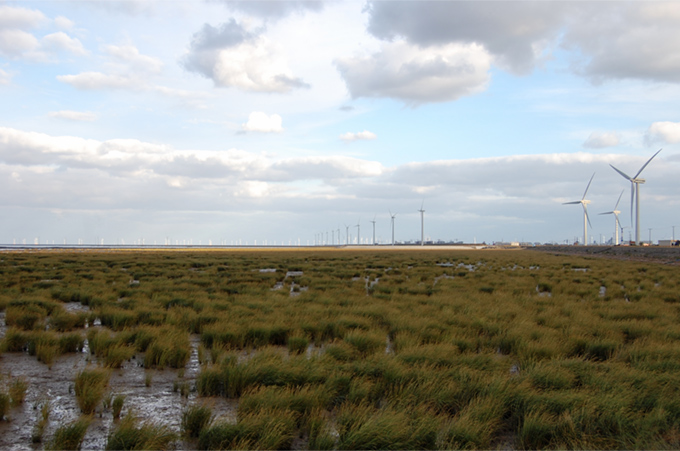
Part 2
Today was the last full-day of survey by our team along this section of the Jiangsu coast before a two-day workshop on Spoon-billed Sandpiper conservation in Rudong. While fuller count details will be published later by SBS in China (SBS Task Force members in China) and the SBS Task Force, the international importance of the area to avian biodiversity cannot be over-stated. Today I was charged with counting one high tide roost area at Dongtai, with others counting several other close-by roost sites. "My" roost, located within a vast new reclamation area, today contained 11,200 small shorebirds and >500 Eurasian Curlew (Near-threatened) with 3+ Far Eastern Curlew (Globally Vulnerable). Further sample counts in this area included a single Spoon-billed Sandpiper (Globally Critically Endangered), 45 Nordmann's Greenshank (Globally Endangered), five Oriental Stork (Globally Endangered), 53 Dalmatian Pelican (Globally Vulnerable, and almost extinct in East Asia: see Birdlife Factsheet on the species), 280 Saunders's Gull and a single Relict Gull (both Globally Vulnerable). There were also 52 Black-faced Spoonbill (Globally Endangered) there, including two colour-banded birds. One was Red over Blue over Red on one leg; the others was Yellow over Red on the left leg, and E05 on the right. According to the Black-faced Spoonbill Conservation Network website (at: http://bfsn.bfsa.org.tw/index.php), both were banded in the ROK: Red over Blue over Red (=E25) was banded on June 5th, 2011 and E05 was banded on June 30th, 2010.
While massive tidal-flats still remain at Dongtai, the vast majority are presently slated for impoundment by 2015 - potentially a(nother) Saemangeum on steroids. The presence of at least two Korean-hatched Black-faced Spoonbill there today is but one important reason why Birds Koreans and people in the ROK should care about the future of these tidal-flats. Last year's IUCN Situational Analysis Report and the upcoming workshop here in Rudong both provide evidence of the growing awareness within the region and globally of the vital importance of the Yellow Sea's tidal-flats - for biodiversity, fisheries, carbon sequestration and other ecosystem services. Decision makers and investors throughout East Asia now - more than ever - urgently need best information and the support of key stakeholders, tidal-flat specialists and the global conservation community if the Yellow Sea's last remaining shorebird hot-spots are to retain their national and global importance.
So please do support Birds Korea - help us to continue providing decision-makers and others with the best information and advice.

(October 19th, 2013), © Birds Korea
